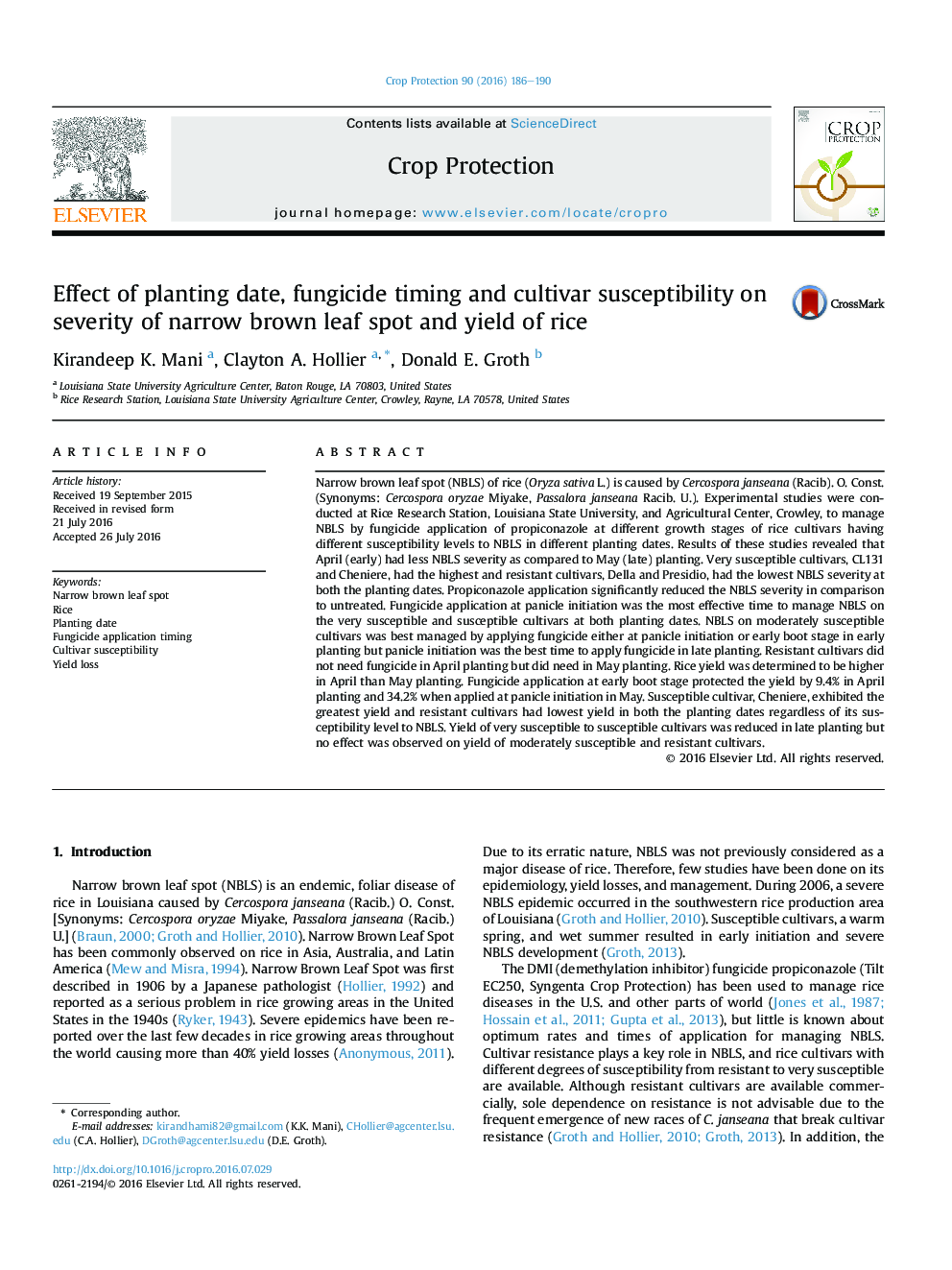| کد مقاله | کد نشریه | سال انتشار | مقاله انگلیسی | نسخه تمام متن |
|---|---|---|---|---|
| 6373126 | 1624297 | 2016 | 5 صفحه PDF | دانلود رایگان |
عنوان انگلیسی مقاله ISI
Effect of planting date, fungicide timing and cultivar susceptibility on severity of narrow brown leaf spot and yield of rice
ترجمه فارسی عنوان
تاثیر تاریخ کاشت، زمان قارچ کش و حساسیت به رقم بر شدت نقطه قهوه ای باریک و عملکرد برنج
دانلود مقاله + سفارش ترجمه
دانلود مقاله ISI انگلیسی
رایگان برای ایرانیان
کلمات کلیدی
نقطه قهوه ای قهوه ای، برنج، تاریخ کاشت، زمان بندی برنامه های کاربردی قارچ کش، حساسیت زراعی، افت عملکرد،
موضوعات مرتبط
علوم زیستی و بیوفناوری
علوم کشاورزی و بیولوژیک
علوم زراعت و اصلاح نباتات
چکیده انگلیسی
Narrow brown leaf spot (NBLS) of rice (Oryza sativa L.) is caused by Cercospora janseana (Racib). O. Const. (Synonyms: Cercospora oryzae Miyake, Passalora janseana Racib. U.). Experimental studies were conducted at Rice Research Station, Louisiana State University, and Agricultural Center, Crowley, to manage NBLS by fungicide application of propiconazole at different growth stages of rice cultivars having different susceptibility levels to NBLS in different planting dates. Results of these studies revealed that April (early) had less NBLS severity as compared to May (late) planting. Very susceptible cultivars, CL131 and Cheniere, had the highest and resistant cultivars, Della and Presidio, had the lowest NBLS severity at both the planting dates. Propiconazole application significantly reduced the NBLS severity in comparison to untreated. Fungicide application at panicle initiation was the most effective time to manage NBLS on the very susceptible and susceptible cultivars at both planting dates. NBLS on moderately susceptible cultivars was best managed by applying fungicide either at panicle initiation or early boot stage in early planting but panicle initiation was the best time to apply fungicide in late planting. Resistant cultivars did not need fungicide in April planting but did need in May planting. Rice yield was determined to be higher in April than May planting. Fungicide application at early boot stage protected the yield by 9.4% in April planting and 34.2% when applied at panicle initiation in May. Susceptible cultivar, Cheniere, exhibited the greatest yield and resistant cultivars had lowest yield in both the planting dates regardless of its susceptibility level to NBLS. Yield of very susceptible to susceptible cultivars was reduced in late planting but no effect was observed on yield of moderately susceptible and resistant cultivars.
ناشر
Database: Elsevier - ScienceDirect (ساینس دایرکت)
Journal: Crop Protection - Volume 90, December 2016, Pages 186-190
Journal: Crop Protection - Volume 90, December 2016, Pages 186-190
نویسندگان
Kirandeep K. Mani, Clayton A. Hollier, Donald E. Groth,
